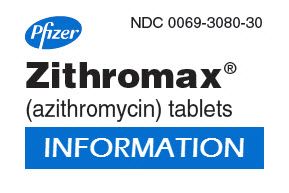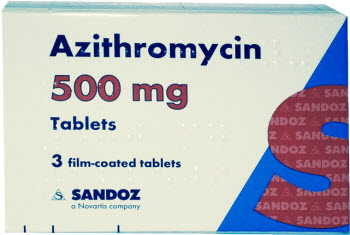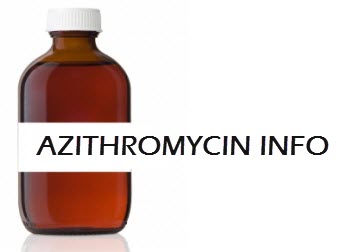
Acute and chronic bronchitis treatment for children and adults. Antibiotics used to treat bronchitis
Contents
- What is bronchitis? Types of bronchitis
- Acute bronchitis
- Chronic bronchitis
- How do you get bronchitis?
- Acute bronchitis symptoms
- Chronic bronchitis symptoms
- Complications of bronchitis
- How do you know if you have bronchitis?
- Bronchitis treatment. How to cure bronchitis?
- How to prevent bronchitis?
- Purulent bronchitis treatment
- Do antibiotics help with bronchitis?
- Antibiotics without prescription online
- Is acute bronchitis contagious?
- Is chronic bronchitis contagious?
- Z-Pak for bronchitis. Z-Pak dosage for bronchitiss
- Z-Pack price. Buy Z-Pak online without prescription
- Zithromax (Z-Pack) dosage for bronchitis
- Where to order Azithromycin 250 or 500 mg?
What is bronchitis? Types of bronchitis
Bronchitis is a diffuse inflammatory disease of the bronchi affecting the mucosa or the entire thickness of the wall of the bronchi. Damage and inflammation of the bronchial tree can occur as an independent, isolated process (primary bronchitis) or develop as a complication against the background of existing chronic diseases and infections (secondary bronchitis).
Damage to the mucous epithelium of the bronchi disrupts the secretion, the motor activity of the cilia and the process of cleansing the bronchi. They share acute and chronic bronchitis, differing in etiology, pathogenesis and treatment.
Acute bronchitis
The acute course of bronchitis is characteristic of many acute respiratory infections (ARVI). The most common causes of acute bronchitis are parainfluenza viruses, respiratory syncytial virus, adenoviruses, less often influenza virus, measles, enteroviruses, rhinoviruses, mycoplasmas, chlamydia, and mixed viral-bacterial infections.

Acute bronchitis rarely has a bacterial nature (pneumococci, staphylococci, streptococci, hemophilus bacilli, whooping cough pathogen). The inflammatory process first affects the nasopharynx, tonsils, trachea, gradually spreading to the lower respiratory tract the bronchi.
Viral infection can provoke the multiplication of conditionally pathogenic microflora, aggravating catarrhal and infiltrative changes of the mucous membrane. The upper layers of the bronchial wall are affected: hyperemia and edema of the mucous membrane occur, pronounced infiltration of the submucosal layer, dystrophic changes and rejection of epithelial cells occur.
With proper treatment, acute bronchitis has a favorable prognosis, the structure and function of the bronchi are fully restored in 3 to 4 weeks. Acute bronchitis is very often observed in childhood: this fact is explained by the high susceptibility of children to respiratory infections. Regularly repeated bronchitis contributes to the transition of the disease to the chronic form.
Chronic bronchitis
Chronic bronchitis is a long-lasting inflammatory disease of the bronchi, progressing with time and causing structural changes and dysfunction of the bronchial tree.

Chronic bronchitis occurs with periods of exacerbations and remissions, it often has a hidden course. Recently, there has been an increase in the incidence of chronic bronchitis due to environmental degradation (air pollution by harmful impurities), widespread harmful habits (smoking), and a high level of allergization of the population.
With prolonged exposure to adverse factors on the mucosa of the respiratory tract, gradual changes in the structure of the mucosa, increased sputum production, a violation of the drainage capacity of the bronchi, a decrease in local immunity develop. In chronic bronchitis, hypertrophy of the glands of the bronchi, thickening of the mucous membrane occurs.
The progression of sclerotic changes in the wall of the bronchi leads to the development of bronchiectasis, deforming bronchitis. A change in the air-carrying capacity of the bronchi significantly impairs the ventilation of the lungs.
How do you get bronchitis? Chronic bronchitis causes
Risk factors for the development of bronchitis.
The main reasons contributing to the development of acute or chronic bronchitis are:
1. Physical factors (damp, cold air, a sharp temperature drop, exposure to radiation, dust, smoke);
2. Chemical factors (the presence of pollutants in atmospheric air - carbon monoxide, hydrogen sulfide, ammonia, chlorine vapors, acids and alkalis, tobacco smoke, etc.);
3. Bad habits (smoking, alcohol abuse);
4. Congestive processes in the pulmonary circulation (cardiovascular pathologies, impaired mucociliary clearance);
5. The presence of foci of chronic infection in the mouth and nose - sinusitis, tonsillitis, adenoiditis;
6. Hereditary factor (allergic predisposition, congenital disorders of the bronchopulmonary system).
It has been established that smoking is a major provoking factor in the development of various bronchopulmonary pathologies, including chronic bronchitis. Smokers suffer from chronic bronchitis 2-5 times more often than non-smokers. The harmful effects of tobacco smoke are observed with active and passive smoking.
Chronic bronchitis contributes to the long-term human exposure to harmful production conditions: dust - cement, coal, flour, wood; vapors of acids, alkalis, gases; uncomfortable temperature and humidity conditions.
Atmospheric air pollution by industrial and transport emissions and fuel combustion products has an aggressive effect primarily on the human respiratory system, causing damage and irritation of the bronchi. High concentrations of harmful impurities in the air of large cities, especially in calm weather, lead to severe exacerbations of chronic bronchitis.
Repeated ARVI, acute bronchitis and pneumonia, chronic diseases of the nasopharynx, kidneys can further cause the development of chronic bronchitis. As a rule, the infection overlaps the already existing damage to the respiratory mucosa by other damaging factors.
A damp and cold climate contributes to the development and exacerbation of chronic diseases, including bronchitis. Heredity plays an important role, which, under certain conditions, increases the risk of chronic bronchitis.
Acute bronchitis symptoms
The main clinical symptom of acute bronchitis is a low chest cough - which usually appears on the background of or at the same time as the manifestations of acute respiratory infection.
The patient has a fever (moderately high), weakness, malaise, nasal congestion, runny nose. At the onset of the disease, the cough is dry, with scanty and difficult to discharge sputum, the cough is worse at night. Frequent coughing out causes pain in the abdominal muscles and chest.
After 2-3 days, sputum (mucous, purulent mucous) begins to abundantly recede, and the cough becomes wet and soft. In the lungs dry and wet rales are heard. In uncomplicated cases of acute bronchitis, dyspnea is not observed, and its appearance indicates the defeat of the small bronchi and the development of obstructive syndrome.
The condition of the sick person is normalized within a few days, the cough may still last for several weeks. Prolonged high temperature indicates the accession of a bacterial infection and the development of complications.
Chronic bronchitis symptoms
Chronic bronchitis occurs, as a rule, in adults, after repeatedly suffering acute bronchitis, or with prolonged irritation of the bronchi (cigarette smoke, dust, exhaust fumes, chemical vapors). Symptoms of chronic bronchitis are determined by the activity of the disease (exacerbation, remission), nature (obstructive, non-obstructive), the presence of complications.
The main manifestation of chronic bronchitis is a prolonged cough for several months over 2 years in a row. Cough is usually wet, appears in the morning, accompanied by the release of a small amount of sputum.
Strengthening of cough is observed in cold, wet weather, and remission - in the dry warm season. The general well-being of patients with this almost does not change, cough for smokers is becoming commonplace.
Chronic bronchitis progresses with time, cough increases, acquires the character of attacks, becomes hacking, unproductive. There are complaints of purulent sputum, malaise, weakness, fatigue, sweating at night. Shortness of breath with loads, even minor ones, joins this.
In patients with a predisposition to allergies, bronchospasm occurs, indicating the development of obstructive syndrome, asthmatic manifestations.
Complications of bronchitis
Bronchopneumonia is a frequent complication of acute bronchitis, it develops as a result of a decrease in local immunity and the layering of a bacterial infection.
Repeatedly transferred acute bronchitis (3 or more times a year), lead to the transition of the inflammatory process to the chronic form. The disappearance of provoking factors (quitting smoking, climate change, changing jobs) can completely save the patient from chronic bronchitis.
With the progression of chronic bronchitis, recurrent acute pneumonia occurs, and with a prolonged course, this disease can turn into chronic obstructive pulmonary disease.
Obstructive changes in the bronchial tree are considered as a predastiny condition (asthmatic bronchitis) and increase the risk of asthma. There are complications in the form of emphysema, pulmonary hypertension, bronchiectasis, cardiopulmonary insufficiency.
Bronchitis diagnosis. How do you know if you have bronchitis?
How to test for bronchitis?

Diagnosis of various forms of bronchitis is based on the study of the clinical picture of the disease and the results of research and laboratory tests:
1. General blood and urine test;
2. Immunological and biochemical blood tests;
3. X-ray of the lungs;
4. Spirometry, peak flowmetry;
5. Bronchoscopy, bronchography;
6. ECG, echocardiography;
7. Microbiological analysis of sputum.
Bronchitis treatment. How to cure bronchitis?
In the case of bronchitis with severe concomitant form of acute respiratory viral infections, treatment in the pulmonology department is indicated, with uncomplicated bronchitis treatment is outpatient.

Therapy of bronchitis should be comprehensive: the fight against infection, the restoration of patency of the bronchi, the elimination of harmful precipitating factors. It is important to undergo a full course of treatment for acute bronchitis in order to exclude its transition to the chronic form.
In the first days of the disease, bed rest, abundant drinking (1.5 - 2 times more than the norm), and a milk-vegetable diet are shown. At the time of treatment, quitting smoking is required. It is necessary to increase the humidity of the air in the room where there is a patient with bronchitis, as the cough increases in dry air.
Therapy of acute bronchitis may include antiviral drugs: Interferon (intranasal), with the flu - Flumadine (Rimantadine), Rebetol (Ribavirin).
In most cases, antibiotics are not used, with the exception of the accession of a bacterial infection, with a prolonged course of acute bronchitis, with a pronounced inflammatory reaction according to the results of laboratory tests.
To improve sputum excretion, doctors prescribe mucolytic and expectorant drugs (Bromhexine, Ambroxol, expectorant herbal, inhalation with soda and saline solutions).
In the treatment of bronchitis used vibration massage, physiotherapy, physiotherapy.
With a dry, unproductive, painful cough, the doctor may prescribe medications that suppress the cough reflex - Oxeladin, Prenoxdiazine (Libexin), etc.
Chronic bronchitis requires long-term treatment, both in the period of exacerbation and in the period of remission.
When exacerbation of bronchitis, with purulent sputum, antibiotics are prescribed - e. g. Zithromax (Azithromycin) (after determining the sensitivity of the selected microflora to them), diluting the sputum and expectorant drugs.

In the case of the allergic nature of chronic bronchitis, an antihistamine should be taken. The mode is semi-sweet, necessarily warm and abundant drink (alkaline mineral water, tea with raspberries, honey). Sometimes they perform therapeutic bronchoscopy, with bronchial lavage with various medicinal solutions (bronchial lavage).
Respiratory exercises and physiotherapy (inhalation, UHF, electrophoresis) are prescribed. At home, you can use mustard plasters, medical jars, warming compresses. To enhance the body's resistance, patients take vitamins and immunostimulants.
Outside the exacerbation of bronchitis, it is desirable sanatorium treatment. Very useful walks in the fresh air, normalizing respiratory function, sleep and general condition.
If during 2 years no exacerbations of chronic bronchitis are observed, the patient is removed from the dispensary observation by a pulmonologist.
How to prevent bronchitis?
Preventive measures to prevent many bronchopulmonary diseases, including acute and chronic bronchitis, include:
- the elimination or weakening of the effects on the respiratory organs of harmful factors (dust, air pollution, smoking);
- timely treatment of chronic infections;
- prevention of allergic manifestations;
- increase immunity;
- healthy lifestyle.
Purulent bronchitis treatment. Bronchitis treatment antibiotics
In the acute period, it is necessary to observe bed rest, exclude smoking and other irritating bronchi factors. Hospitalization is advisable for severe intoxication and respiratory failure, especially in elderly patients.
The main method of treatment of purulent bronchitis is empirical therapy with antibiotics:
1. Preparations of aminopenicillins group (Ampicillin, Amoxicillin);
2. Combined preparations of Amoxicillin with Clavulanic acid (Amoxiclav) and Ampicillin with Sulbactam;
3. Macrolides (Azithromycin, Clarithromycin),
4. Fluoroquinolones (Sparfloxacin, Levofloxacin),
5. Cephalosporins III generation (Cefotaxime, Cefepime).
These drugs have activity against the most common pathogens of purulent bronchitis (S. Pneumoniae, N. influenzae, M. catarrhalis) and the ability to create a high concentration of the active substance in bronchial secretions.
In order to increase the hydration of sputum and improve its evacuation from the bronchial tree, mucolytics and expectorant drugs (Acetylcysteine, Ambroxol, Bromhexine, etc.), drug inhalations are prescribed. The early elimination of the purulent process in the bronchi contributes to the rehabilitation of bronchoscopy with bronchoalveolar lavage, local administration of antimicrobial and secretolytic drugs.
Pathogenetic treatment is combined with the use of biostimulants and multivitamins, exercise therapy and respiratory gymnastics. After relieving the acute manifestations of purulent bronchitis, a chest massage is added, as well as physical methods of therapy (inductothermy, microwave therapy, electrophoresis). In severe forms of purulent bronchitis, extracorporeal hemocorrection (blood ultraviolet irradiation, hemosorption, plasma exchange) may be required.
Antibiotics for bronchitis. Do antibiotics help with bronchitis?
Antibiotics are prescribed only for bacterial infections, which may appear as an independent disease or be a complication of another condition. A single treatment regimen and general indications for all antibiotics do not exist. For each drug, the instructions contain the diseases and the spectrum of microorganisms for which it is active.
In the case of bronchitis, antibiotic treatment takes place in the presence of bacterial flora or a high probability of its occurrence. Indications for the appointment of this group of drugs are conditions when:
- The patient is an elderly person whose immunity is weakened. In this situation, the antibiotic will help to avoid complications and the addition of a bacterial infection, the probability of which is very high.
- There was an exacerbation of the chronic form of bronchitis.
- The acute form of inflammation of the bronchial tree was delayed and recovery does not occur more than 3 weeks.
- Bronchitis is caused by damage to the mucous membranes, such as burns to the respiratory tract.
- The causative agents are chlamydia or mycoplasma, as they are difficult to treat differently.
What to take for bronchitis? How to choose an antibiotic?
The main rule in the choice of antibiotic is that it must be active in relation to the desired pathogen. With each disease there is a list of permissible for the treatment of drugs. You can not buy the first available antibiotic and start treatment.
An important point in the choice is the nature of the distribution of the drug in the tissues of the body. If the pathogen is localized in the lungs, and the greatest concentration of the drug is found in the urinary tract, it is better to choose another means.
Best antibiotic for bronchitis
The following are described antibiotics, which are most often prescribed by doctors for bronchitis:
1. Zithromax (Azithromycin). It also known as Z-Pak. This antibiotic helps well and quickly with bronchitis and pneumonia. It requires a short course of treatment in both adults and children. One of the most popular and inexpensive drugs that treat respiratory diseases. Contraindications to the drug is hypersensitivity to the components of the drug.
2. Bactrim (Biseptol). Cheap and effective antibacterial agent, which belongs to the group of sulfa drugs. It does not apply to modern drugs, as it has been used for a long time, but so far this antibiotic often becomes the choice of doctors. The drug is used for infections of upper respiratory tract, respiratory tract, urinary tract. It can have a negative effect on the condition of the liver, kidneys and the blood-forming system.
3. Amoxil (Flemoxin). It is a tablet that can be swallowed or dissolved in water. It has a pleasant taste. The drug is resistant to the action of gastric juice. Well helps with infections of the respiratory, gastrointestinal tract and urinary system. This is one of the safest drugs.
4. Augmentin. It has a wide spectrum of action, it is prescribed for bronchitis, pneumonia, inflammatory processes in the kidneys, soft tissues. It refers to protected penicillins, which are often prescribed by doctors. Amoxiclav has a similar effect.
5. Cefadroxil (Cefazolin). The drug is available in ampoules. The drug must be treated in a hospital. The antibiotic belongs to the first generation of cephalosporins. Effective with pneumonia, infections of the skin, bones, peritonitis, endocarditis.
6. Sumamed (Zithromax). This is the original Azithromycin. The price of the drug is higher than its analogs. With bacterial inflammation in the airways, it is no less effective than many newer medicines of the last generation. It is used in all diseases that are caused by microbes sensitive to Azithromycin.
Treatment with any antibiotic should be carried out to the end, it is impossible to interrupt the course!
Where to buy antibiotics for bronchitis? Antibiotics without prescription online
In a proven online pharmacy from our partner (a banner just below), you can buy antibiotics of both a broad spectrum of activity and those aimed at suppressing bacteria in a particular disease, for example, bronchitis.
The online pharmacy from our partner offers a wide range of antibiotics and other drug groups.
You can order online on the official website. You are provided services for the delivery of medicines by courier to many cities in the world. You can ask any question on the phone posted on the pharmacy website.
Is acute bronchitis contagious?
Is acute bronchitis contagious? The answer is yes. When in contact with a sick person, the probability of being infected is high. The risk of infection increases if you enter into close contact with a carrier of the virus: hugs, kisses. The opportunity to get sick also exists if a person consumes food or drinks from the patient's dishes.
It is worth remembering that pathogenic bacteria and viruses that cause illness, and not the disease itself, are transmitted from person to person. Knowing that the disease is contagious to others, elementary precautions should be observed: wash hands with soap or other detergent regularly, do wet cleaning (preferably with antiseptics), ventilate the room, take vitamins and preparations to strengthen the immune system.
It is better to refuse contact with a sick person. At least until the body temperature of the infected will not return to normal. Otherwise, it is recommended to use a protective mask.
Is acute bronchitis contagious in children? Yes, definitely. It is worth remembering that the body of the child is at risk of infection more than the body of an adult. Children of primary school age are in a zone of special risk, since their immune system has not been completely formed.
Is chronic bronchitis contagious?
Chronic bronchitis. Is it contagious or not?
In order to answer the question “Is chronic bronchitis contagious,” it is necessary to consider the causes of the chronic form of inflammation of the bronchial tree. The disease is associated with chemical or physical factors: contact with cold or hot air, frequent contact with dust and gas (for example, when working on a construction site), radiation.
The causes of the disease can be excessive irritation of the bronchus with tobacco (in heavy smokers). The recurrence of infections caused by influenza bacilli and pneumococci can contribute to the acute form of the disease in chronic. Also, the disease can be triggered by a complication after a previous inflammation of the pulmonary membranes and inflammation of the upper or lower respiratory tract.
If chronic bronchitis was caused by viruses that remained in the body due to a disease that was not previously cured, then during periods of exacerbation of the disease there is a chance of infection. If the causes of the overflow of acute bronchitis in the chronic form are the above chemical and physical factors, the disease is not contagious.
It is worth noting that coping with the chronic form of the disease is much harder than with acute bronchitis. Most often, the consequence of timely untreated chronic bronchitis is bronchial asthma. In severe cases, the chronic form of bronchitis can cause lung emphysema and pulmonary heart development (when the right ventricle of the heart is stretched as a result of an increase in pressure in the pulmonary circulation).
Z-Pak for bronchitis. Z-Pak dosage for bronchitiss
Z-Pak is also available under other names: Azithromycin, Zithromax.
This is an macrolide antibiotic used to treat chronic bronchitis if penicillins cannot be used. In addition, the advantage of the drug is a single dose per day and a short course of treatment, usually 3 days.
Z-Pak (Zithromax) is available in several dosage forms - film-coated tablets and capsules. The active component is Azithromycin (in the form of a dihydrate).

In infectious diseases of the upper respiratory tract for adults, doctors prescribe Azithromycin 0.5 gram per day. Course dose - 1.5 grams, the duration of therapy - 3 days.
For the treatment of bronchitis in adults, Z-Pak (Zithromax) is prescribed with caution during pregnancy (when the benefits of its use exceed the threat to the fetus), with arrhythmias (violation of the frequency, rhythm and consistency of myocardial contraction), severe renal failure or liver disease.
Side effects of Azithromycin - dyspepsia, loose stools, dizziness, headache, vaginitis. Usually this medicine does not cause any undesirable effects.
In addition to this popular remedy for the treatment of bronchitis, other macrolides may be prescribed: Bactrim, Augmentin, Cefadroxil and others. To understand the benefits of a drug will help the doctor.
Z-Pak price. Buy Z-Pak online without prescription
In the online pharmacy by our partner, you can buy Zithromax without any delay (banner just below). You do not need to go to a local city pharmacy, you do not need prescriptions from a doctor to buy Zithromax online, you save money (these are high margins in regular pharmacies compared to online pharmacies).
You can pay by check or VISA or Master Card. The whole procedure is quick and easy. Your health is a priority for online pharmacy employees. The presence of drugs in combination with high quality and low price - this is the rule, which representatives of online pharmacies always adhere to.
Z-Pak price
How much does Z-Pak (Zithromax) cost in online pharmacies?
The price of Z-Pak may vary depending on the packaging, manufacturer and other factors. Basically, representatives of pharmacies are trying to make the price of tablets as low as possible compared to competitors. However, there are still different prices in the pharmaceutical market.
Below we will present you the prices for Z-Pak tablets, which are available to you at our partner’s well-known online pharmacy. These prices are one of the most optimal and profitable in the market.
Zithromax (Z-Pak) 500 mg:
- 30 pills - $74.58 ($2.49 per pill);
- 90 pills - $134.24;
- 180 pills - $223.74;
- 360 pills - $402.73 ($1.12 per pill).
Zithromax (Z-Pak) 250 mg:
- 30 pills - $46.65 ($1.56 per pill);
- 90 pills - $94.15;
- 360 pills - $307.89 ($0.86 per pill).
Zithromax (Z-Pak) 100 mg:
- 60 pills - $43.56 ($0.73 per pill);
- 180 pills - $88.86;
- 360 pills - $156.82 ($0.44 per pill).
Here is not a complete list of dosages and the amount of tablets in the package. For more information, you can visit the official website of the pharmacy (the banner is slightly higher).
Zithromax (Azithromycin, Z-Pak) dosage for bronchitis. Z-Pak for bronchitis
Use of Zithromax (Azithromycin, Z-Pak) for bronchitis.
The drug Zithromax (Azithromycin) is a drug that is prescribed for the treatment of bronchitis. This is a macrolide antibiotic with a large spectrum of action. The peculiarity of Azithromycin lies in the effective counteraction of pathological microorganisms with a high concentration in the area of inflammation. The antibiotic reduces inflammation by inhibiting protein synthesis in pathogenic bacteria.

Azithromycin for bronchitis is a universal drug that is not only easy to use, but also the most effective.
The main indicator for the use of Azithromycin is the diagnosis in the patient's body of such pathogenic bacteria as:
- pneumococci;
- hemophilic sticks;
- moraxella;
- mycoplasma;
- chlamydia;
- legionella.
Zithromax (Azithromycin, Z-Pak) perfectly counteracts these microorganisms and is effective in diseases of the lower respiratory tract: bronchitis, pneumonia of atypical and bacterial types.
Order of reception and dosage of Azithromycin.
Azithromycin for bronchitis can be administered to children weighing 45 kg and adult patients. The medicine must be taken orally, 1 hour before eating, or 2 hours after it, every day, once every 24 hours.
Taking the antibacterial drug with food reduces the indicators of the boundary concentration by half.
For children up to 3 years old, Azithromycin is prescribed as a suspension for bronchitis:
- 5 ml of the medical preparation with a weight of 15-24 kg;
- 7.5 ml of the medical preparation with a weight of 24–34 kg;
- 10 ml of the medical preparation with a weight of 34–44 kg.
The term of antibiotic in case of obstructive bronchitis is from 3 to 5 days.
The common procedure for taking Azithromycin for adults:
- 500 mg of the drug is taken on the 1st day;
- 250 mg other days: from the second to the fifth day of treatment.
A faster Azithromycin administration regimen is also possible: for 3 days, 500 mg a day. That is, the total amount of substance taken for the course is 1500 mg.
Treatment with Zithromax for bronchitis is contraindicated in children under 12 years old, and people whose mass is less than 45 kg.
Where can I buy Azithromycin? Where to get Azithromycin 250 or 500mg?
Our partner's canadian online pharmacy is happy to offer you Azithromycin 250/500 mg, as well as a wide range of medicines and products for health and a healthy lifestyle. This pharmacy is the oldest pharmacy on the Internet, where you will find everything you need to maintain and maintain health. For about 20 years, this online store has been selling products for health from a very wide range around the world.
Looking for where to buy and get Azithromycin 250 and 500 mg over the Internet? Then click on the banner below!
Get Azithromycin through the Internet - it's cheap, fast and convenient!
The company guarantees you:
- Only authentic and quality products.
- Complied with the terms and conditions of storage of all medical products.
- Low retail prices.
- Wholesale prices for some groups of goods. See for yourself!
Reservation of drugs. Ordering and booking drugs is an extremely useful and relevant service, which is present in all modern pharmacies of the city.
You spend a lot of time looking for the right drug yourself in an assortment of city pharmacies. In the online pharmacy catalog you can easily find and book the necessary medicines and other health products. Here you will find the largest selection of rare drugs. The range also includes dietary supplements, plant-based drugs.




